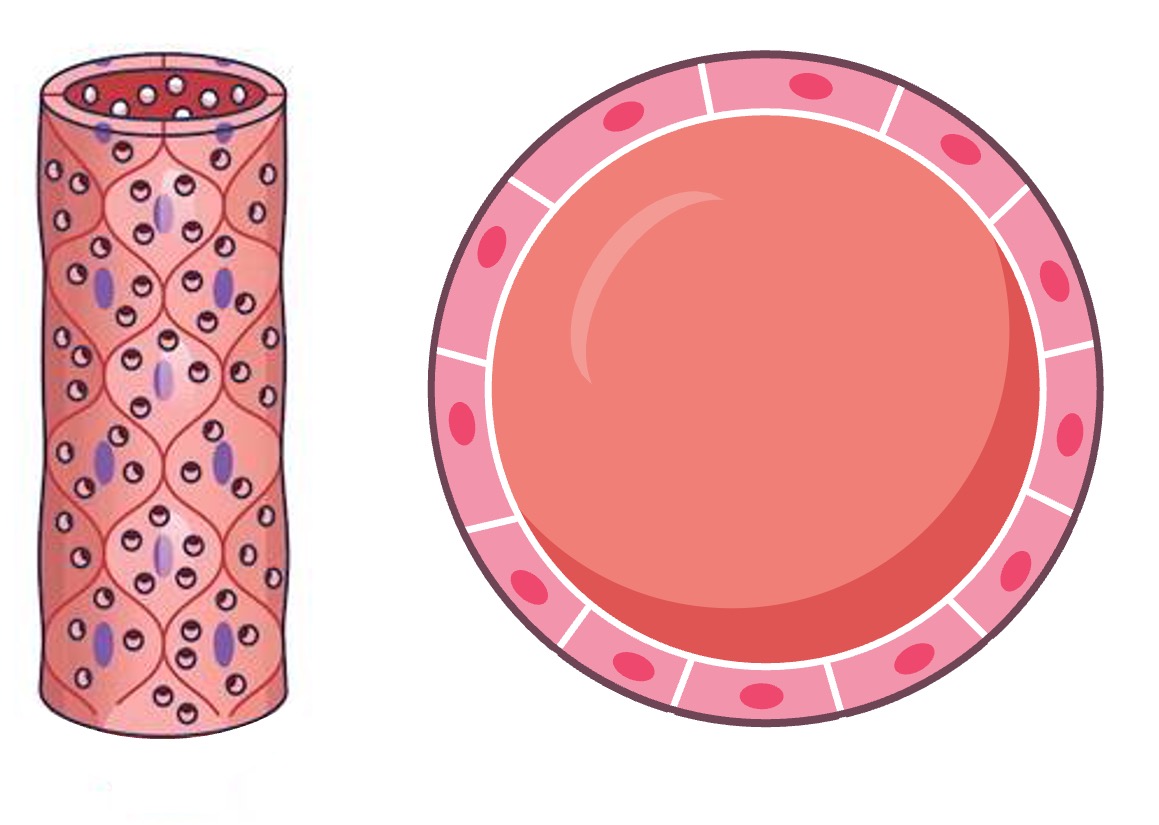

Capillaries
Structure and Function
The function of capillaries is to exchange materials between the cells in tissues and blood travelling at low pressure
-
Arteries split into arterioles which in turn split into capillaries, decreasing arterial pressure as total vessel volume is increased
-
The branching of arteries into capillaries therefore ensures blood is moving slowly and all cells are located near a blood supply
-
After material exchange has occurred, capillaries will pool into venules which will in turn collate into larger veins
Capillaries have specialised structures in order to accomplish their task of material exchange:
-
They have a very small diameter (~ 5 µm wide) which allows passage of only a single red blood cell at a time (optimal exchange)
-
The capillary wall is made of a single layer of cells to minimise the diffusion distance for permeable materials
-
They are surrounded by a basement membrane which is permeable to necessary materials
They may contain pores to further aid in the transport of materials between tissue fluid and blood
Capillaries structure may vary depending on its location in the body and specific role:
-
The capillary wall may be continuous with endothelial cells held together by tight junctions to limit permeability of large molecules
-
In tissues specialised for absorption (e.g. intestines, kidneys), the capillary wall may be fenestrated (contains pores)
-
Some capillaries are sinusoidal and have open spaces between cells and be permeable to large molcules and cells (e.g. in liver)
Structure of a Capillary





